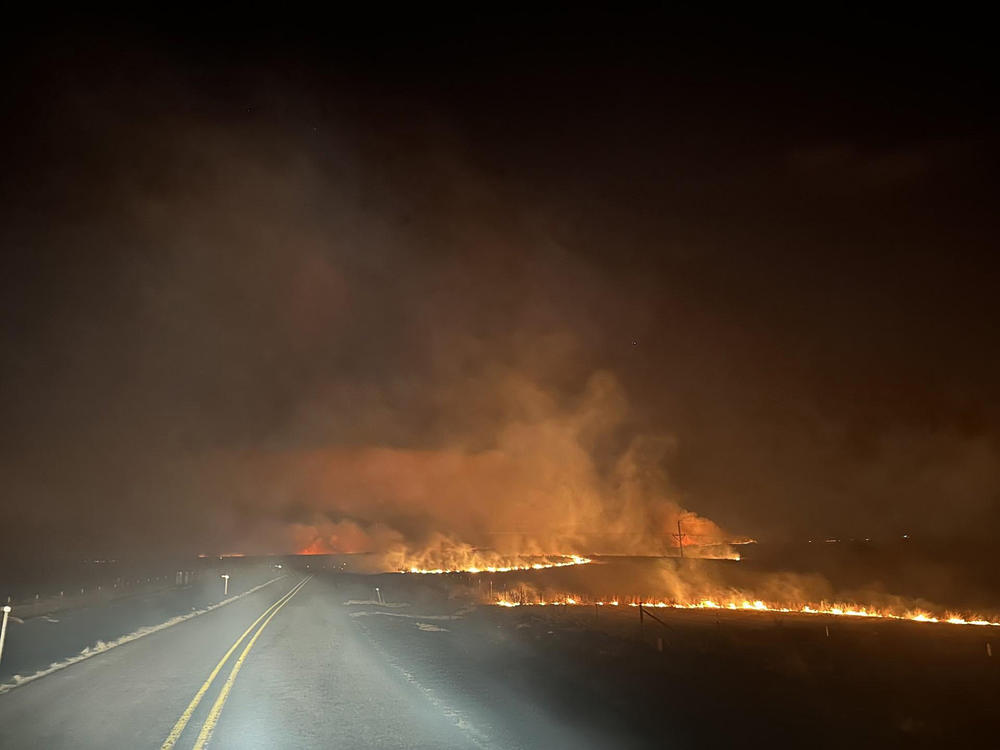Section Branding
Header Content
A warm, dry spring has U.S. forecasters worried about the upcoming wildfire season
Primary Content
Most of the United States is expected to see warmer-than-average temperatures this spring, federal forecasters say, with dry conditions likely in the West.
That's raising concerns about wildfires, especially in parts of the Southwest, Great Plains, and the Upper Mississippi River Valley, said Jon Gottschalck, operations branch chief at the National Oceanic and Atmospheric Administration's Climate Prediction Center.
The southern High Plains, in particular, which includes Colorado, Kansas, New Mexico, Oklahoma, and Texas, is going to be "quite vulnerable to high wildfire risk, especially during high wind events," Gottschalck said Thursday on a call with reporters.
Texas recently suffered the largest wildfire in the state's history, which investigators say was started by power lines. In the Mid-Atlantic this week, high winds helped fuel blazes in North Carolina, Virginia, West Virginia, and Maryland.
NOAA released its Spring Outlook amid a stretch of record warm weather. Last month was the hottest February on record, and 2023 was the hottest year ever.
High average temperatures last year were exacerbated by a strong El Niño climate pattern, which is a natural cycle that heats water in the Pacific Ocean and raises average temperatures worldwide.
Gottschalck said the effects of the current El Niño are expected to weaken through the spring.
But recent heat records are part of a longer warming trend that scientists expect to continue as climate change intensifies. Global temperatures are rising because of the accumulation of greenhouse gasses like carbon dioxide in the atmosphere, according to the World Meteorological Organization, which is part of the United Nations. Those greenhouse gasses come from humans burning fossil fuels.
"Climate change is affecting the timing, intensity, and duration of weather events in the United States," Rick Spinrad, NOAA's administrator, said in a news release.
Forecasters also warned of low water levels on the Mississippi River this summer because of below-average snowpack and precipitation in the Northern Plains and the Midwest.
Ed Clark, director of the National Water Center, said low-flow conditions could affect navigation on the entire Mississippi River system, as well as water supplies for communities and industries.
NOAA doesn't expect major flooding anywhere in the country this spring.
Bottom Content




